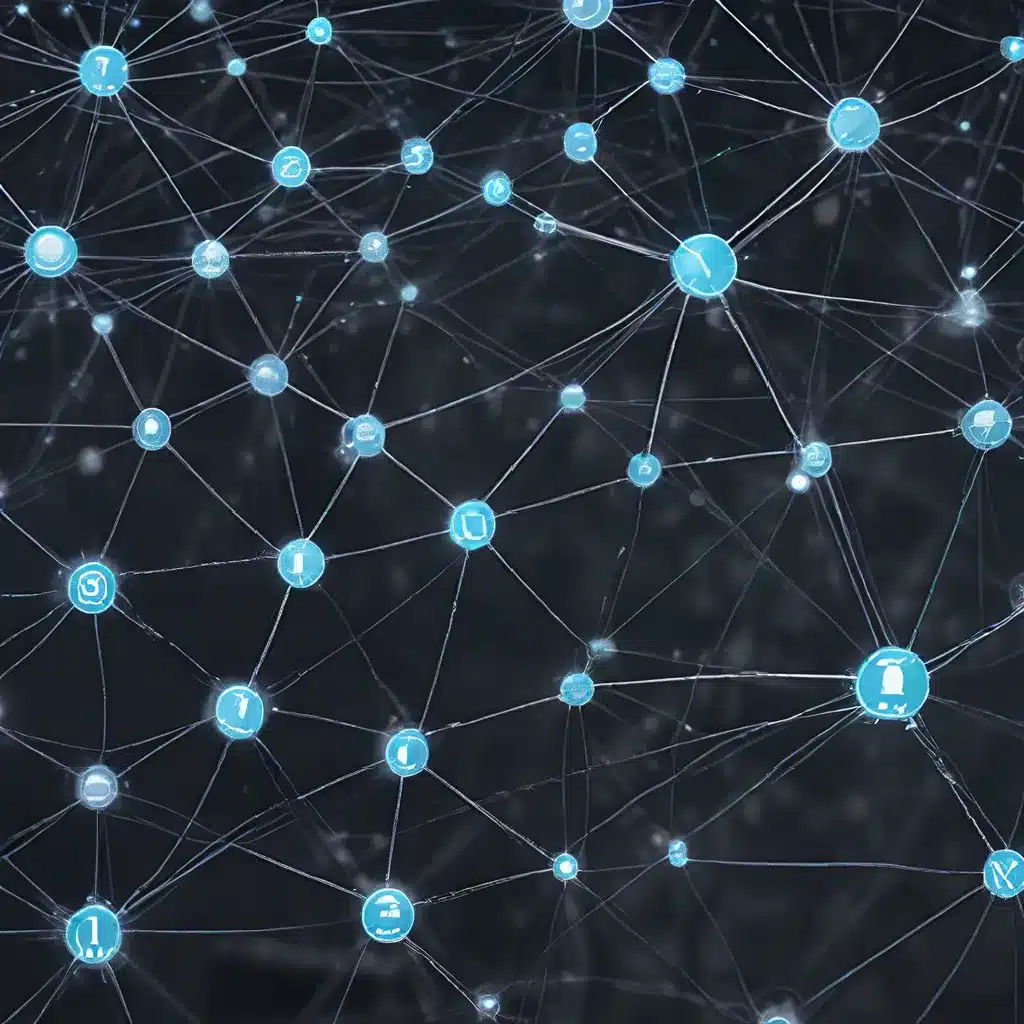
The Rise of Sensor Networks and IoT
Sensor networks have become increasingly prevalent in our modern, connected world. These distributed systems of interconnected devices, known as the Internet of Things (IoT), have revolutionized the way we collect, process, and utilize data. From smart homes and cities to industrial automation and environmental monitoring, sensor networks have enabled unprecedented levels of data-driven decision-making and real-time insights.
As the adoption of IoT technologies continues to grow, so too does the need for efficient and secure methods of managing the vast amounts of data generated by these networks. One emerging approach that has gained significant attention is federated learning, a distributed machine learning technique that allows sensor nodes to collaboratively train models without the need to share sensitive data.
Federated Learning in Sensor Networks
Federated learning is a decentralized approach to machine learning that enables IoT devices to train models on their local data, and then share the model updates with a central server or cloud platform. This allows the aggregation of knowledge from multiple sources without the need to share the raw data, addressing privacy and security concerns.
In the context of sensor networks, federated learning can be particularly beneficial. Sensor nodes, often deployed in diverse environments, can have access to unique and valuable data sets that, when combined, can lead to more accurate and robust machine learning models. By leveraging this distributed and heterogeneous data, sensor networks can unlock new possibilities for predictive analytics, anomaly detection, and optimization across a wide range of applications.
Key Considerations in Sensor Network Federated Learning
Implementing federated learning in sensor networks requires careful consideration of several critical factors:
1. Data Heterogeneity
Sensor nodes within a network may collect data with varying characteristics, such as resolution, frequency, or modality. Accounting for this heterogeneity is essential to ensure the compatibility and effectiveness of the federated learning models.
2. Energy Efficiency
IoT devices, including sensor nodes, often have limited power resources. The communication and computation requirements of federated learning must be carefully balanced to minimize energy consumption and extend the battery life of these devices.
3. Network Dynamics
Sensor networks can be subject to frequent changes in network topology, device connectivity, and data availability. Federated learning algorithms must be resilient to these dynamic conditions to maintain model performance and convergence.
4. Security and Privacy
As sensor networks handle sensitive and potentially confidential data, it is crucial to protect the privacy of users and secure the communication and model updates in the federated learning process.
Practical Applications and Advancements
Federated learning in sensor networks has the potential to transform a wide range of real-world applications. Some notable examples include:
Smart Cities
Sensor networks deployed in urban environments can leverage federated learning to optimize traffic flow, predict energy consumption, and improve resource allocation, leading to more efficient and sustainable city operations.
Industrial Automation
Sensor-equipped machines and production lines can use federated learning to predict maintenance needs, detect anomalies, and optimize production processes, enhancing productivity and reducing downtime.
Environmental Monitoring
Sensor networks in ecological and agricultural settings can employ federated learning to monitor and forecast environmental conditions, detect and mitigate climate-related risks, and support sustainable practices.
As research and development in this field continue to advance, we can expect to see innovative and impactful applications of sensor network federated learning emerge, transforming the way we collect, analyze, and leverage data for a better and more sustainable future.
Conclusion
The intersection of sensor networks, IoT, and federated learning represents a promising frontier in the world of data-driven technologies. By harnessing the power of distributed data and collaborative learning, sensor networks can unlock new levels of predictive capability, operational efficiency, and decision-making across a wide range of industries and domains.
As we navigate the challenges and opportunities presented by this evolving landscape, it is essential to continue advancing the technical and ethical considerations surrounding sensor network federated learning. By prioritizing security, privacy, and energy efficiency, we can ensure that these transformative technologies are responsibly and sustainably deployed to benefit individuals, communities, and the planet as a whole.
Sensor Networks is committed to fostering the growth and innovation in this dynamic field, empowering researchers, practitioners, and enthusiasts to explore the boundless potential of sensor network federated learning.